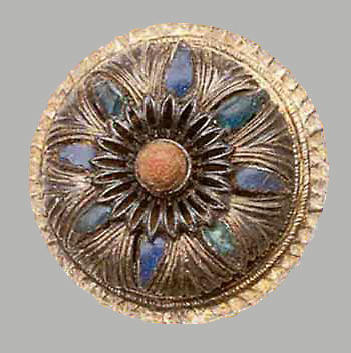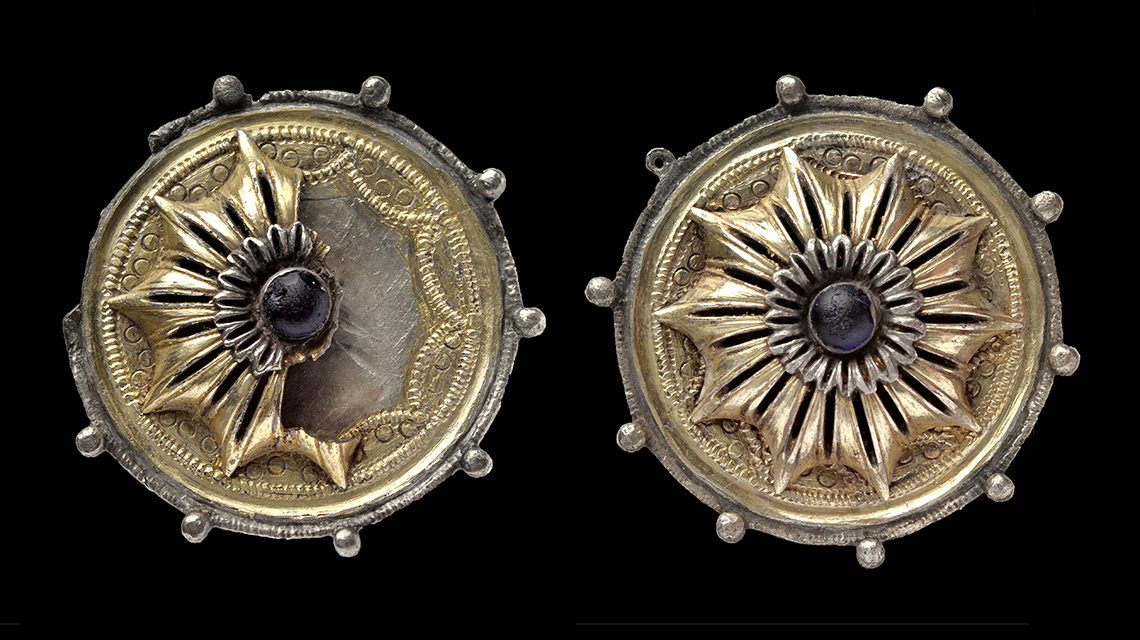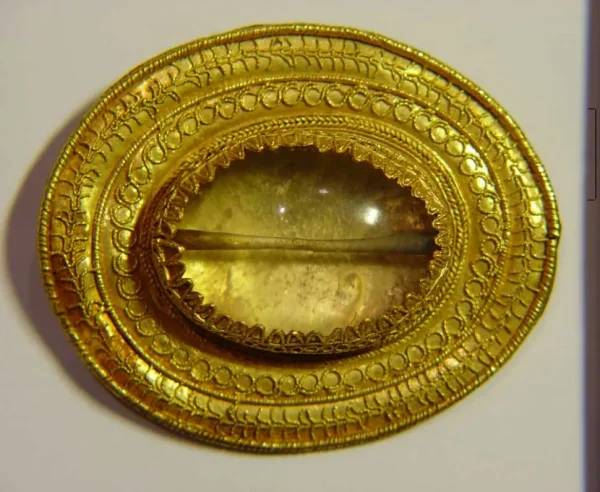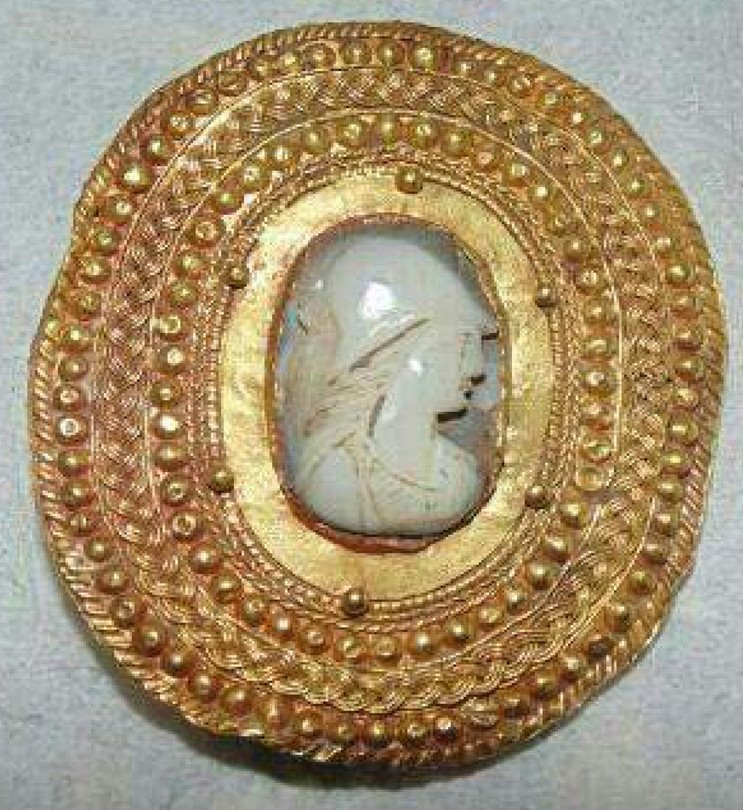LITERATURE
- Fibule a disco di VI-VII secolo in Italia; Martina Dalceggio
- Le fibule a disco di Castel Trosino: produzione locale o urbana? Riflessioni e spunti per una discussione; Martina Dalceggio academia.edu
- I Longobardi. Un popolo alle radici della nostra Storia, Elena Percivaldi
 The silver fibula was found at the height of the clavicles of the deceased which was attired with a mantle with: a beaded edge, a wing with smaller triangles and this brooch (umbo central button); a typical Roman-Byzantine. |  In the eastern cemetery area of Columbaris, among the 157 burials found there is the Capuchin tomb n. 80; Sardinia. source >> |
 Early medieval necropolis of Castel Trosino (Ascoli Piceno), female burial tomb S (inv. 1277) source >> | 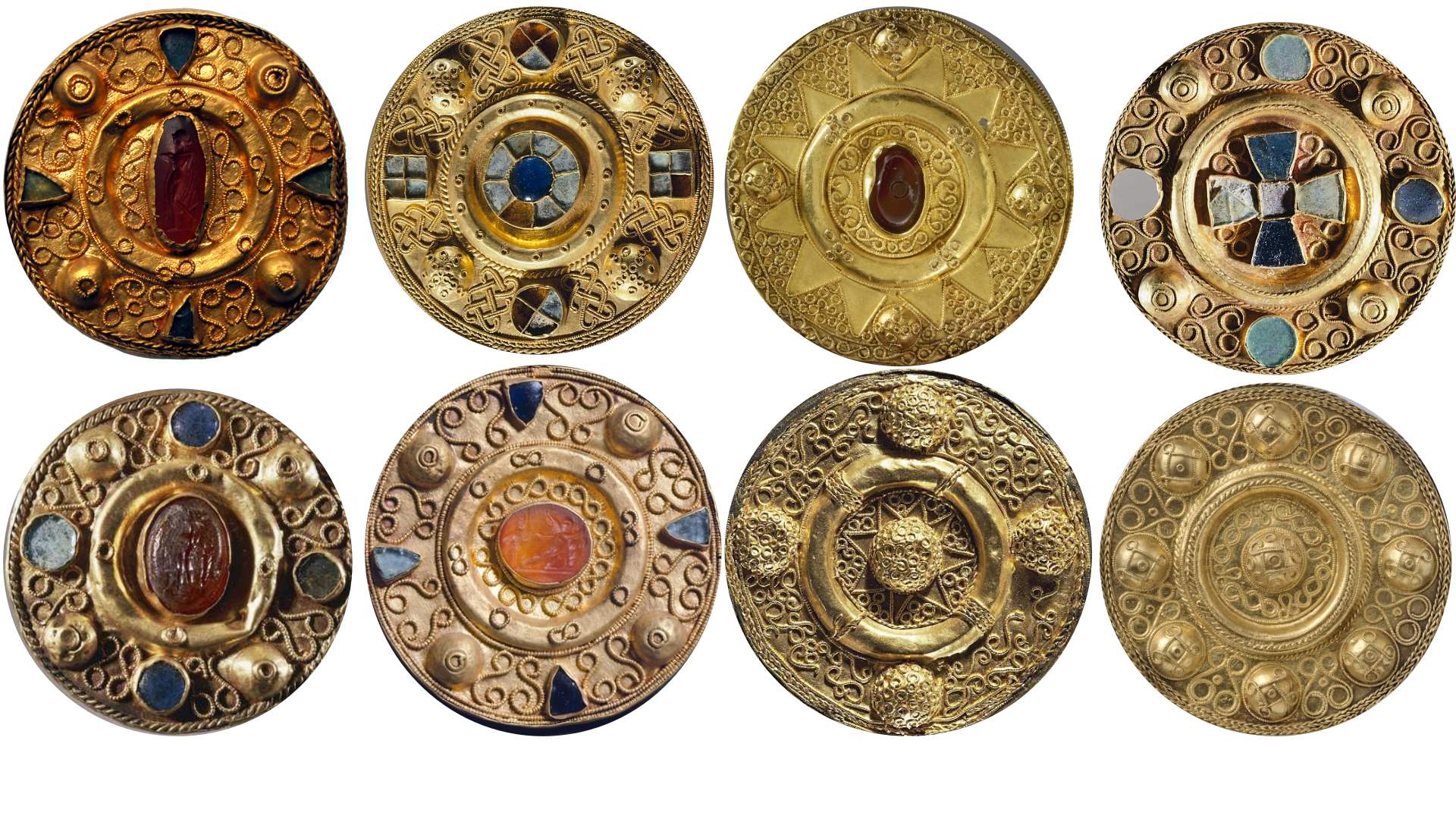 picture https://casteltrosino.files.wordpress.com/2018/06/fibule.jpg Langobardic brooches from Castel Trosino >> https://www.casteltrosino.it/longobardi-di-castel-trosino/ |
 | “Round gold filigree fibula. It is made up of two overlapping discs, surrounded by a braided wire. The ornamentation of the first disk is given by S reverses and faced, whose upper end makes only one turn, while the lower one makes three. The decoration of the upper disc is obtained by means of circles. A carnelian is set in the center. A fish herringbone pattern runs along the outer edge of the two discs.” Byzantine production; 600-649, Langobardic necropolis near Udine, in Lovaria diameter 3.9 cm Cividale, National Archaeological Museum description >> picture >> |
 Brooch-pendant The Lombard necropolis of Ponte del Rio in Spilamberto http://www.archeobologna.beniculturali.it/mo_spilamberto/necropoli_longobarda/ponte_del_rio_2003.htm https://www.gruppostoriavera.it/la-necropoli-longobarda-di-spilamberto/ |  picture >> “An exceptional disc fibula in gilded silver was found in one of the women’s tombs, equipped with one of the most richly decorated items, which was then transformed into a pendant, adorned with a glass paste cameo surrounded by river pearls, glass pastes and motifs. filigree.” Byzantine pendant in gold and pearls enclosing a cameo from the Roman age (diam. 4.6 cm, thickness 3 cm). Superintendence for Archaeological Heritage of Emilia Romagna. http://www.sistemonet.it/incoming/viewArchaeology-action.do?id=2849&tab=image&imageId=1242¤tPage=3&popup=no |
 Langobardic Naples, National Archaeological Museum Picture >> | |
 Spectacular brooch from Keszthely-fenékpuszta Horreum, Hungary. It’s an example of the Avar goldsmith’s art from 6th century. Brooch is made of gold with fantastic garnets, crystal quartz cabochon and pearl beads. https://zellwerk.hypotheses.org/123 |



